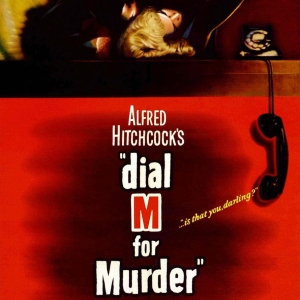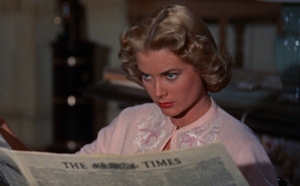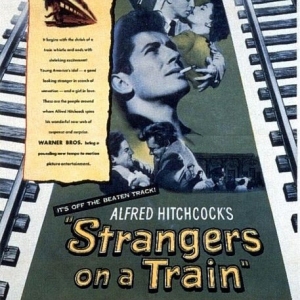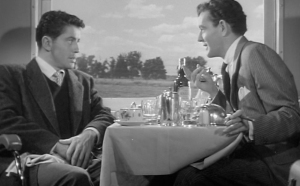In the mould of Lifeboat and Rope, Hitchcock placed another physical limitation on his own work in Rear Window. The camera remains almost entirely within the confines of a small New York apartment, gazing out into a courtyard overlooked by other apartments in the largest indoor set Paramount had ever produced.
Photographer Jeff (James Stewart) is unable to leave his flat as he recovers from a broken leg. During his resentful idleness, he passes the time peering at his neighbours. What beings as a bit of nosiness, takes on a more suspicious tone when Jeff suspects that one of his neighbours (Raymond Burr) has murdered his wife. With the help of his stylish girlfriend Lisa (Grace Kelly) and his insurance company nurse Stella (Thelma Ritter), they dig further into this menacing mystery.
Right from the start of his career, voyeurism has been a favourite Hichcock theme and it’s applied here expertly. As Jeff observes his neighbours he gives them his own titles – the Songwriter, Miss Lonelyhearts , Miss Torso, the Newlyweds etc. – and infers things about their personalities and lives based on the little he sees. These characters have their own small narrative arcs throughout the film, but there’s always the possibility that we, like Jeff, have imposed our assumptions on their lives. “We’ve become a race of Peeping Toms,” says Stella disapprovingly. Everybody’s guilty. None more so than the avid cinemagoer.
Rear Window is a damn near flawless film. The casting is sublime, with Stewart and Kelly giving the best performances of their entire careers. If there was one role Kelly could absolutely hit out of the park it was the ice-queen with a heart of fire. Lisa initially appears voguish and picture-book perfect, but once she gets caught up in Jeff’s murder theory she’s as excited about it as he is and doesn’t shy away from getting her hands dirty. Indeed, thanks to Jeff’s injury, he relies on Lisa and Stella doing all the actual investigating for him.
The cinematography is also magnificent. There are more iconic and sinister shots than you could shake a stick at and the use of diegetic sound – occurring naturally from within the world of the film as Jeff would hear it – is the most effective use of sound in Hitchcock’s entire career, apart from maybe The Birds.
It’s simply one of the best films Hitchcock ever made and one of the best films of all time.



















